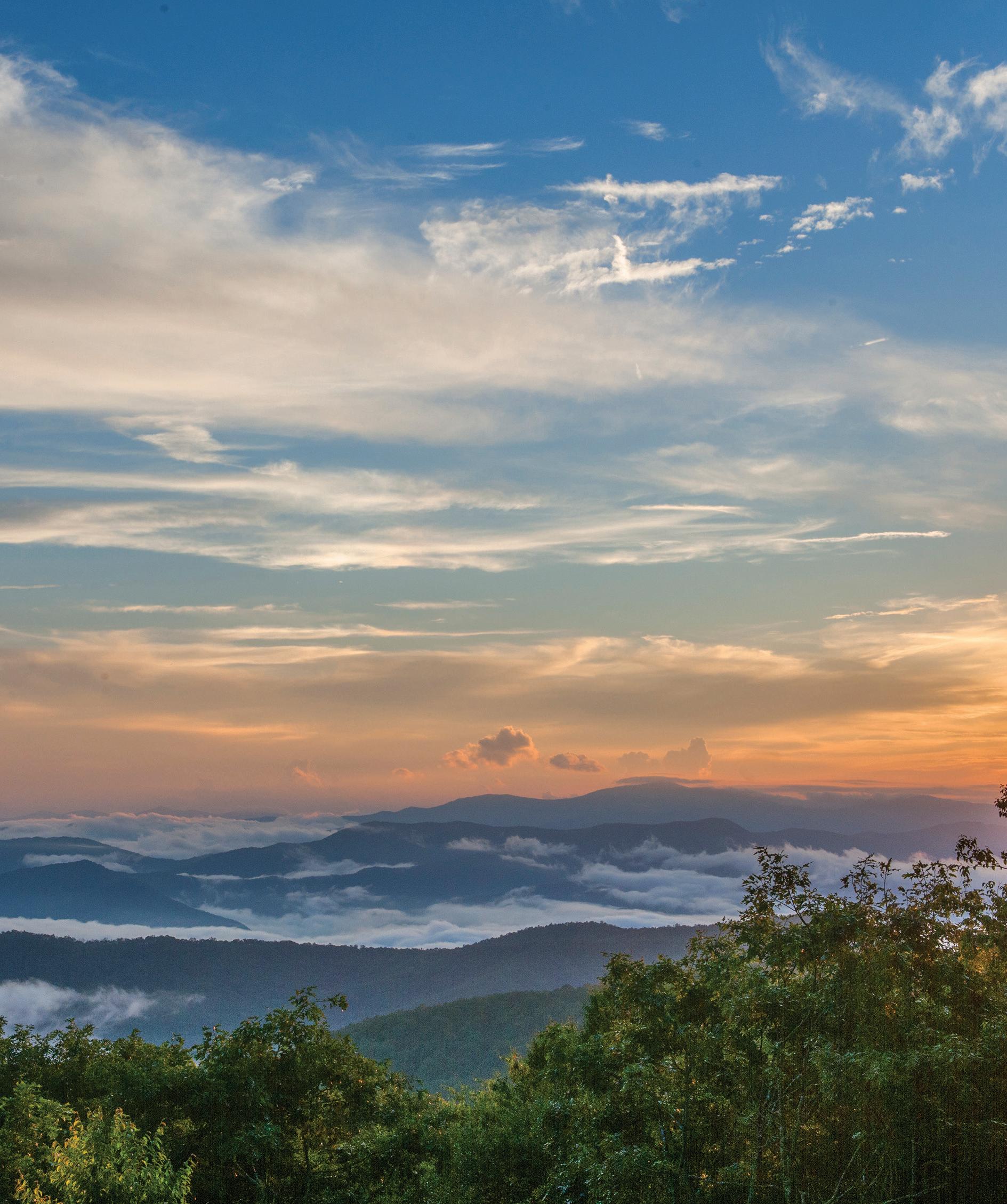
4 minute read
Back Then
Editor’s note: A longer version of this column by George Ellison first appeared in The Smoky Mountain News in May 2003. H ave you ever seen a mountain lion here in the Smokies region? I haven’t. In fact, the only one I’ve ever viewed outside of a zoo was somewhere near Crystal River, Florida, back in the early 1990s. It bounded out of the scrub in front of my truck and passed quickly across the highway. Even now, I can vividly recall the combined grace and power of that animal.
I frequently hear from people who have spotted a mountain lion in Western North Carolina. Or at least they think that’s what they saw. I’d guess that about 90 percent of these sightings are of something else. But the other 10 percent seem to be pretty reliable.
It’s my supposition that any mountain lions living in this region today aren’t descendents of the genetic stock that were originally here. That is, I think they are ones that have wandered into the eastern mountains from Florida or the western states; or, more likely, that they are ones that were Columnist George Ellison
trapped elsewhere and deliberately released. Whatever the source, I’m reasonably certain that we have mountain lions in the Smokies region.
The Family Felidae contains a number of species, including jaguars, ocelots, mountain lions, bobcats, lynxes and domestic cats. Bobcats are very common in the Smokies region, but they are very secretive and are seldom seen.
Mountain lions were common enough well into the 19th century throughout North Carolina. According to Donald W. Linzey’s notes in Mammals of the Great Smoky Mountains National Park (1995), the last mountain lion killed in the Great Smokies was back in the early winter of 1920: “Tom Sparks was said to have been attacked by a panther while herding sheep on Spence Field. He managed to inflict a deep wound in its left shoulder. Several months later, W. Orr killed a panther near what is now Fontana Village and found that its left shoulder blade was cut in two. This was generally believed to be the same cat Mr. Sparks had wounded.
Nevertheless, according to Linzey, there were 12 reported sightings between 1908 and 1965 and 31 sightings for the years 1966-1976. He doesn’t provide figures since BACK THEN
that date, but my recent discussions with park service biologists would lead me to believe that sightings have increased in the Smokies in recent years, particularly in the Clingmans Dome area. Also, several National Park Service rangers have told me that they have spotted mountain lions while patrolling the Blue Ridge Parkway. Even if only 10 percent of these reports are valid, that still allows for a relatively significant mountain lion population in the Smokies region.
(George Ellison wrote the biographical introductions for the reissues of two Appalachian classics: Horace Kephart’s Our Southern
Highlanders and James Mooney’s History, Myths, and Sacred Formulas of the Cherokees.
In June 2005, a selection of his Back Then columns was published by The History Press in Charleston as Mountain Passages: Natural and
Cultural History of Western North Carolina and the Great Smoky Mountains. Readers can contact him at P.O. Box 1262, Bryson City, N.C., 28713, or at info@georgeellison.com.)
THE BEST RIDES IN THE BLUE RIDGE REGION

Meltdown
VINTAGE MOTORCYCLE GATHERING
CARVING UP BLOOD MOUNTAIN Lake Country Travels
FRONT ROYAL, VA PLAM WERKS DRAGON RIDING TIPS
SPRING 2020





Time for some road therapy
Sometimes it's a little better to travel than to arrive

— Robert M. Pirsig, Zen and the Art of Motorcycle Maintenance

Grab a cup of joe and start your day with our e-newsletter that hits your inbox every Friday morning



HTNI W .ERHTEGOTISH LALEAREW









gnertu soy ytinummoc tantropmi ,noitalosi ehtgnriuD ot tnaywllaicepse e. Whltead hnh atg hsiwew,tniatrecnuoemitsihtnI.y f y sihtfotraa pebotduore pareW. eron mer beeves ny haitnummoc seldnagnicnatsidliac soosydsee a f f a e fihktnhat gy .noiegr run os irehcead tna ,srekroe wrah cltea, hsrednopsetrsrfi ypg








